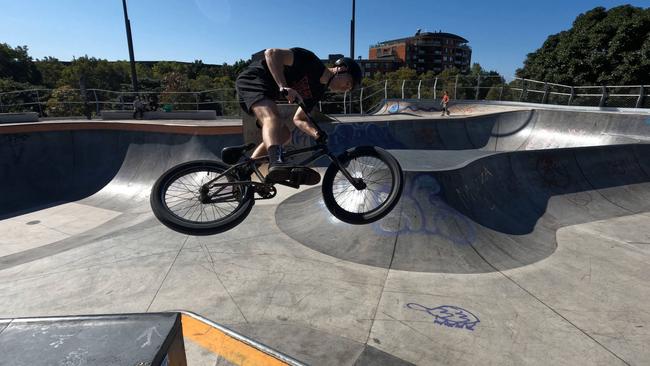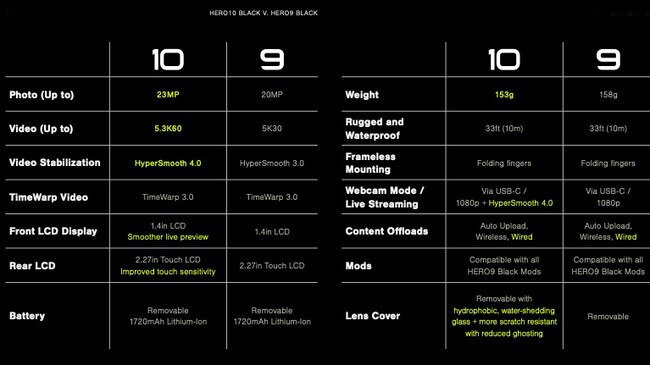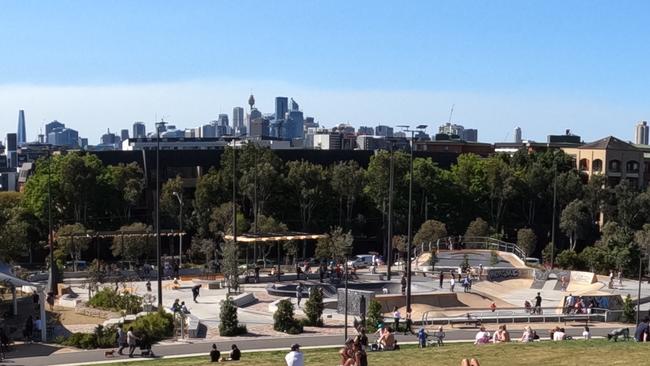Review: GoPro Hero10 Black action camera
Living opposite a skate park proved a perfect setting for testing GoPro’s latest tiny action camera the Hero10 Black.

Living opposite a skate park proved a perfect setting for testing GoPro’s latest tiny action camera the Hero10 Black.
Drastically slowing down the motion of bikes and skateboards flying through the air and simultaneously changing direction showed just how skilful some people are.
In 2021 you might ask why bother with an additional pocket camera when the state-of-the-art smartphone camera already can fulfil most of your everyday photography needs.
When it comes to videoing things that move, time lapse, or speeding up, slowing down, and smoothing out jumpy action, the GoPro is in its element.
At 7 x 5 x 3cm, it’s tiny, hardy, and can attach to any object when you shoot, whether it be a helmet, scooter, surfboard, mountain bike, ski, tripod or selfie stick. You can shoot underwater to one atmosphere without needing an external case.
You don’t need to be an extreme sports nut; you might enjoy time lapse photography, such as videoing a sunrise, or the motion of the night sky.
This tenth generation GoPro Hero10 Black has a new processor, the GP2 which makes it fast to operate. It’s capable of big resolutions and frame rates such as 5.3K video at 60 frames per second, 4K video at 120 fps, and 2.7K video at 240 fps.
Shooting 5.3K video may seem over the top given we class even 4K TVs as high resolution, and 240 frames per second wasteful given 30fps offers smooth motion for everyday use.
Those rates offer you editing options. When you edit the video later, you can enlarge and crop a section of 5.3K video and still achieve super-sharp video resolution. Likewise, you can slow down 240 frames per second video to an eighth the speed and it will be as smooth as everyday clips at 30 frames per second. You have all that flexibility.

So I could capture amazing videos of bikes and skateboards flying into the air turning corners. The same would apply to surfing and skiing videos.
The camera takes up to 23MP stills, but you can grab a single frame from a 5K video that’s up to 19.6 megapixels.
The periodic time functions are another great GoPro feature. You can shoot time lapse footage as video or stills – and manually stitch the frames together when editing. Night lapse lets you shoot sunsets, sunrises and night video. The camera automatically adjusts the light settings between frames as light changes, for example as the sun rises.
TimeWarp is different to time lapse. With time lapse, the camera is stationary as it videos a scene changing over time. With TimeWarp, the camera levels the horizon and smooths the motion as it moves taking time lapse footage. You can shoot smooth action going down a ski-run without the jolts and bumps ruining the results.
GoPro has thrown in some useful shooting tools such as HindSight, which buffers the last 30 seconds of video before you hit record, so if you are videoing your children playing sport, you won’t miss the start of an impressive kick for goal.
You won‘t have to set the alarm and wake up to record a sunrise. You can set the starting and ending time on the camera, switch it off to save battery, and leave it.
GoPros have their limitations. They are not designed for still photographs where you compose the subject, blur the background with the Bokeh effect, or use some of the nattier machine learning features, such as Apple’s new cinematic mode.

You can zoom a GoPro but you need to change the settings for that. GoPros are about quick action video, not thoughtful image composition.
Nevertheless, there are four image snapping modes available, burst, night photo, SuperPhoto for high resolution, and RAW photo.
Any fancy zoom-ins during a video or reframing is done using GoPro’s Quik app for iOS and Android that’s part of the package. Editing such as trimming vision is finicky on a phone, you’re better off using a tablet.
Hero10 Black can automatically upload your vision to GoPro’s cloud whenever you plug it in to charge. Alternatively you can transfer footage to a paired Apple or Android phone wirelessly or by cable.
You can edit clips, add music and share the final cut using the GoPro Quik app, and even livestream events, although the set-up is a little complex.
The Hero10 Black with a year’s subscription to cloud uploads and the Quik editing app costs $599.95. You pay more for the camera ($749.95) if you don’t take up the subscription.



To join the conversation, please log in. Don't have an account? Register
Join the conversation, you are commenting as Logout